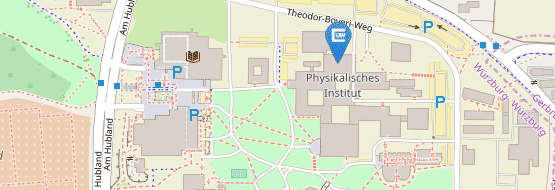The Mott-Hubbard transition in (in)finite dimensions - divergent precursors and a sad fate
11/26/2015Thomas Schäfer, Institute of Solid State Physics, TU Wien SFB/QMB Seminar in SE2 at 16:15
Although the notion of two-particle quantities may appear rather abstract, they provide an important bridge between experimental and theoretical condensed matter physics. Not only they can be exploited to calculate momentum dependent response functions to be directly compared with experiment - they also serve as crucial input quantities for the systematic inclusion of spatial fluctuations beyond local approximations like the dynamical mean field theory (DMFT). This is essential to improve the description of the intrinsically non-perturbative phenomenon of the Mott-Hubbard metal-to-insulator transition (MIT) in finite dimensions.
In this talk, non-perturbative hallmarks of the MIT are already identified well inside the metallic regime of the Hubbard model in terms of divergencies of the local two-particle irreducible vertex in infinite dimensions [1]. The inclusion of spatial correlations on longer and longer length scales by means of
the dynamical vertex approximation (D?A) shows that even stronger modifications of the MIT physics occur in two dimensions. At low temperatures the critical interaction for the onset of an insulator is progressively reduced towards zero in this case. Eventually, an insulating spectral gap is always
opened at low-enough temperatures by quasi long-ranged non-local antiferromagnetic Slater paramagnons, so that the Mott MIT completely disappears [2].
1] T. Schäfer,
G. Rohringer, O. Gunnarsson, S. Ciuchi, G. Sangiovanni,
and A. Toschi, Phys. Rev. Lett. 110, 246405 (2013).
[2] T. Schäfer,
F. Geles, D. Rost, G. Rohringer, E. Arrigoni, K. Held, N.
Blümer, M. Aichhorn, and A. Toschi, Phys. Rev. B 91, 125109 (2015).


